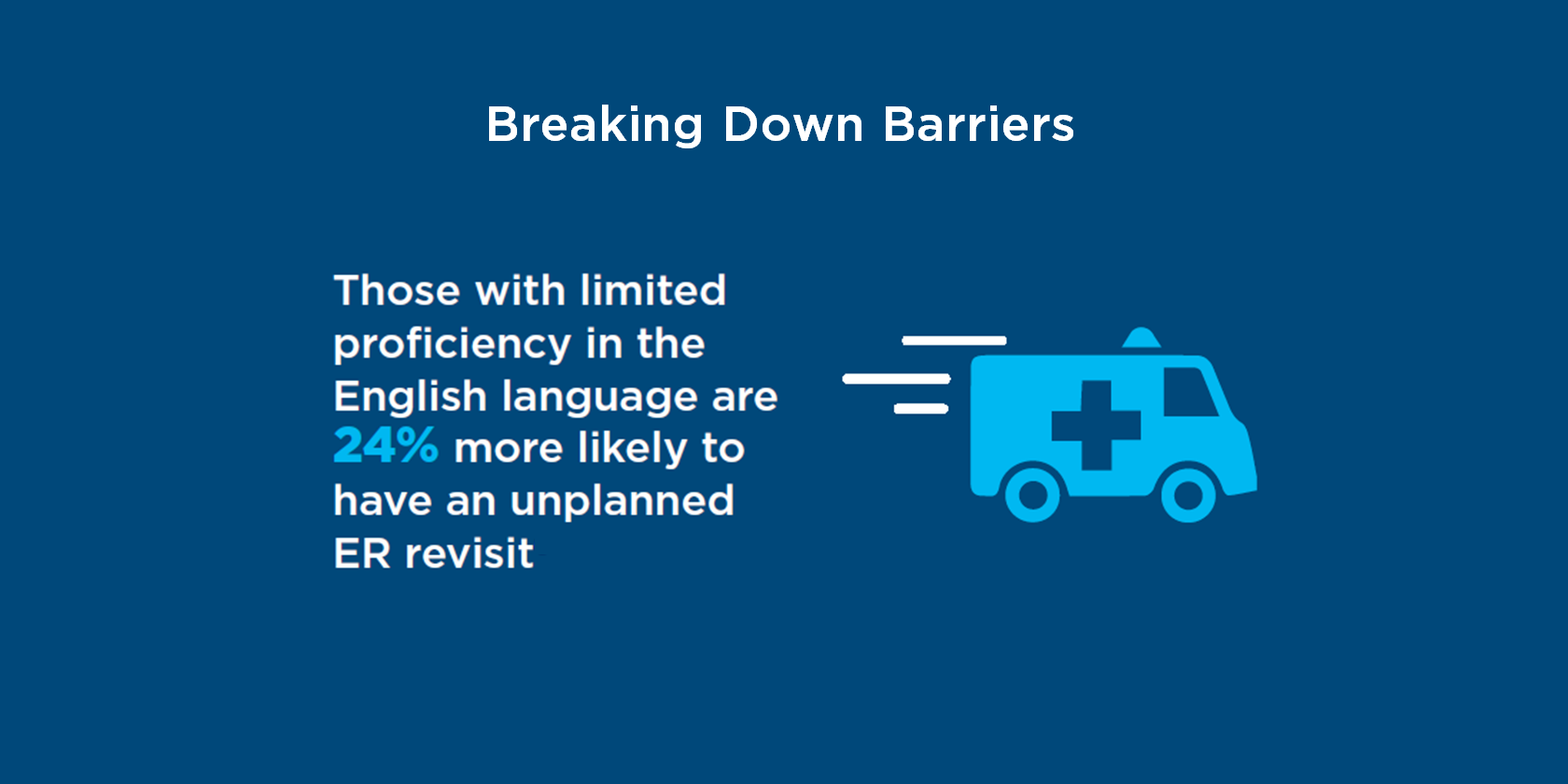
What is Health Literacy?
Health literacy is a person’s ability to obtain, process, and understand basic health information. Research indicates that limited language skills and low literacy skills are associated with lower educational attainment and worse health outcomes. Having limited English proficiency in the United States can be a barrier to accessing health care services and understanding health information.
Why Is Health Literacy Important?
According to the CDC, two decades of research indicate that health information is often presented in ways that are not understandable by most Americans.
- The average adult reads at an 8th grade level. However, more than 75% of patient materials are written at a high school or college reading level. The barrier in readability can hinder patients from correctly interpreting and acting on the health information they receive.
- 9 out of 10 adults struggle with health information when it’s unfamiliar, complex, or jargon-filled. This can leave patients feeling confused with their diagnosis or treatment plans, which might cause a lack of confidence and support in their health management.
- 40-80% of medical information communicated during office visits is forgotten immediately, and nearly 50% is retained incorrectly.
These common barriers in language and health literacy have significant indications on patients’ wellness. For instance, individuals with limited health literacy or proficiency in English had:
- Nearly 2x more preventable ER visits
- Over 50% more days of poor behavioral or physical health
- A 24% higher chance of an unplanned ER revisit

How Can You Help As a Physician?
Health literacy is as important for physicians and health care professionals as it is for patients. To ensure the medical information you provide is well understood, we need to play an active role in guiding and educating patients. Below are five things you can do to help break down language and health literacy barriers:
1. Ask patients to repeat what they understand
Use the teach-back method to ensure patients have a clear understanding of the information provided. This technique involves asking patients to state in their own words what they need to know or do about their health. This can help decrease callbacks and unnecessary follow-up appointments due to lack of clarity.
2. Communicate clearly in plain language
Make written communications more readable and test how readable your content is. Try to keep all medical information and instructions at or below an 8th-grade reading level. Use words patients are more likely to understand. Numerous plain language resources are available to help.
3. Provide language interpretations and visual aids
Find language assistance resources for your office and provide health information in multiple languages. Utilize tools and resources on visual communication to support written or spoken health messages.
4. Recommend helpful resources to educate patients
Use MyHealthfinder as a resource to help patients learn more about their health and preventive care.
5. Stay informed and receive health literacy training
Take a health literacy course suggested by the CDC and encourage other health professionals in your practice to do so as well.
Conclusion
Overall, improving health literacy can empower patients to make informed decisions for themselves and loved ones, engage actively in their care journey, and manage their health more effectively. Better health literacy will ultimately lead to improved health outcomes and a more supportive patient experience.
To read more insights on our “Breaking Down Barriers” series, check out the CareAllies resources page.
CareAllies is a leading service supporting physicians in successful value-based care. Learn more about what we do and contact us to explore how we can assist you in your journey.